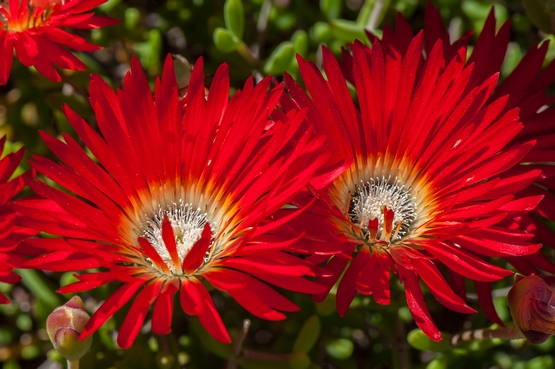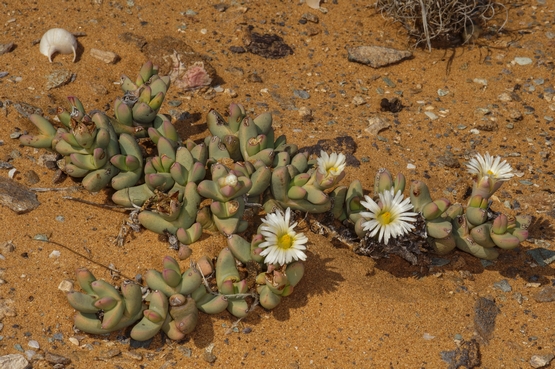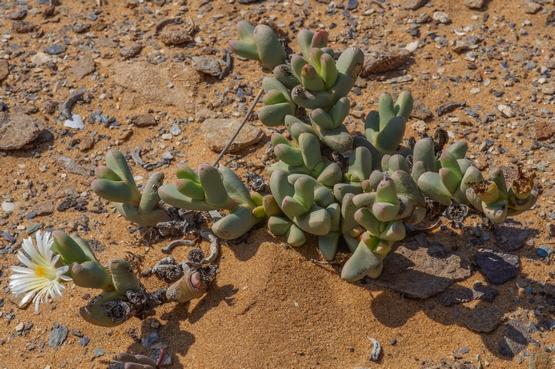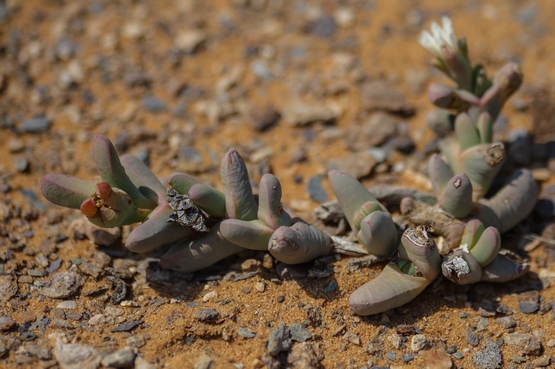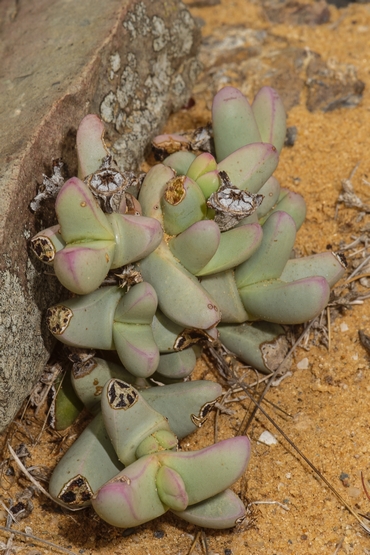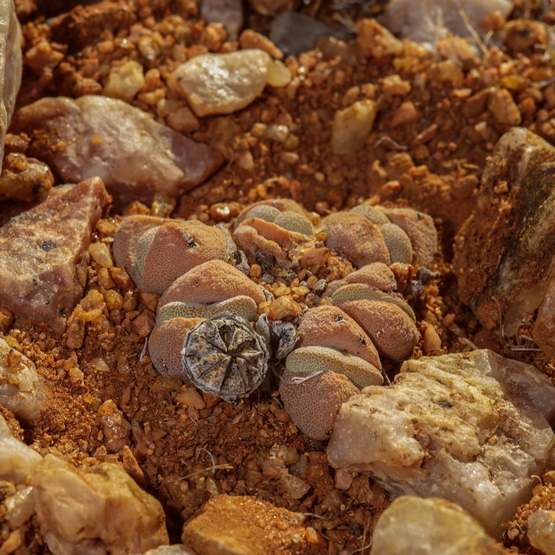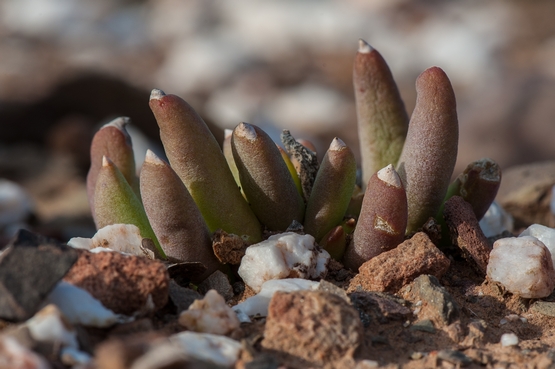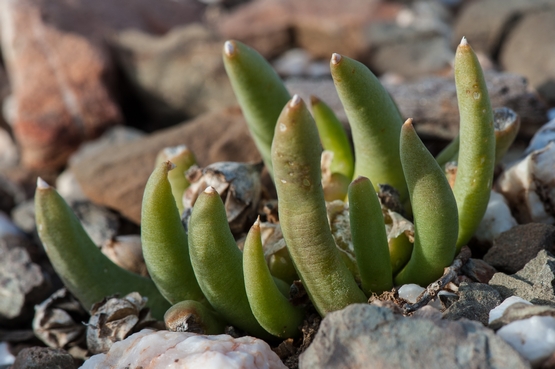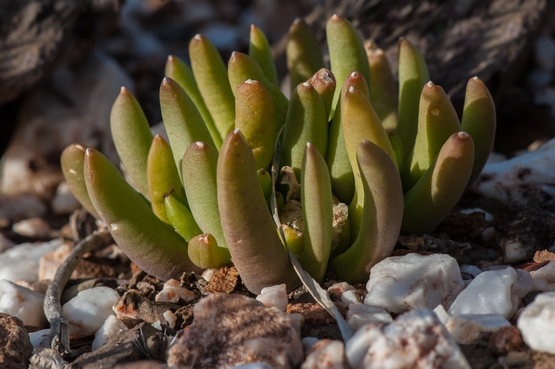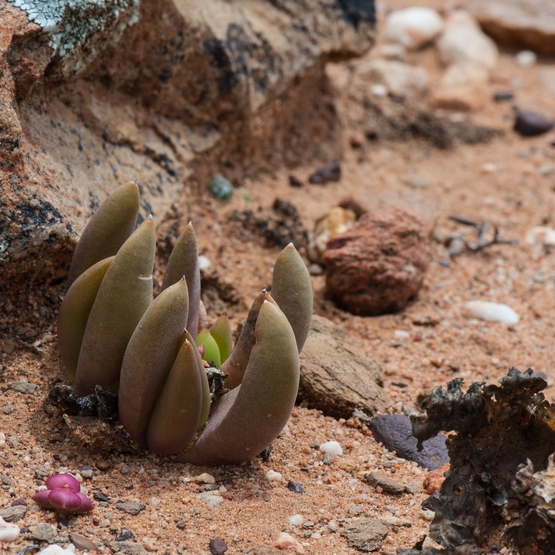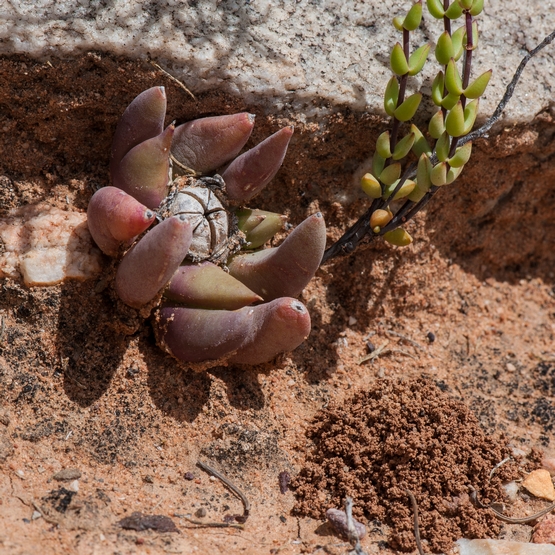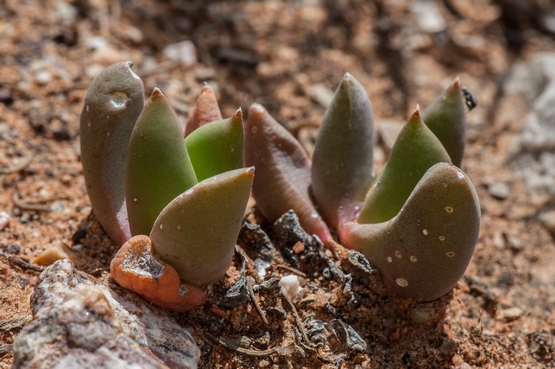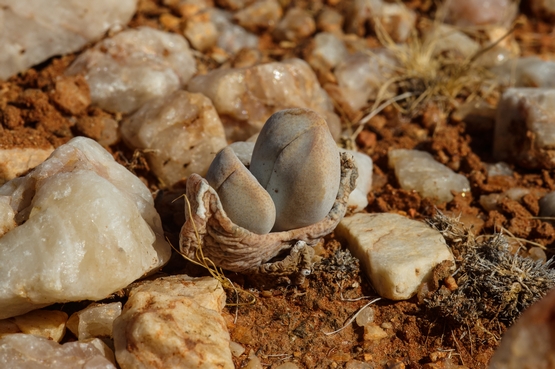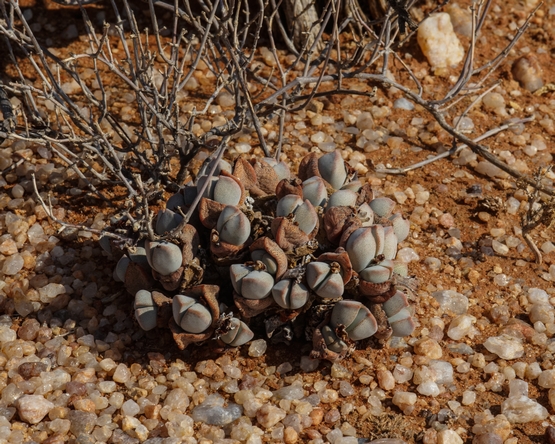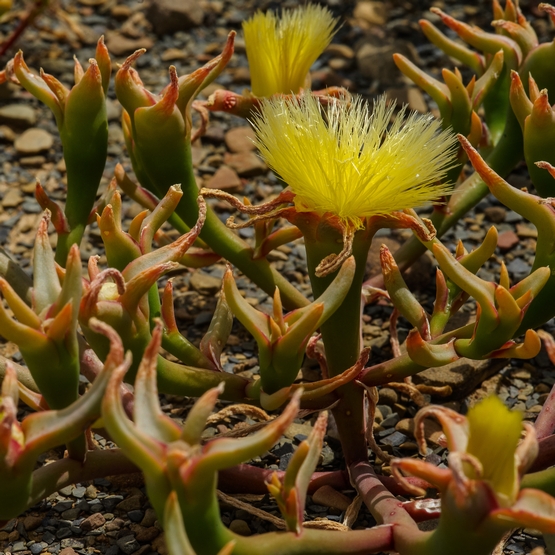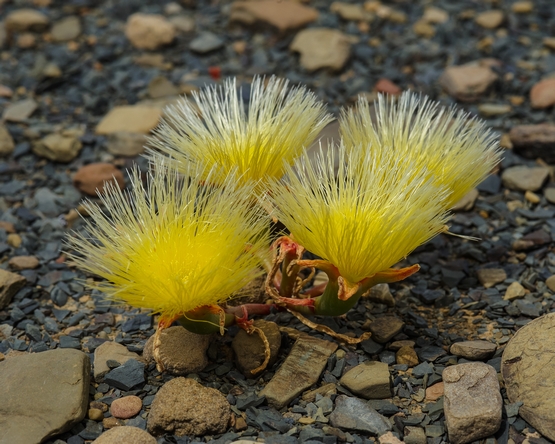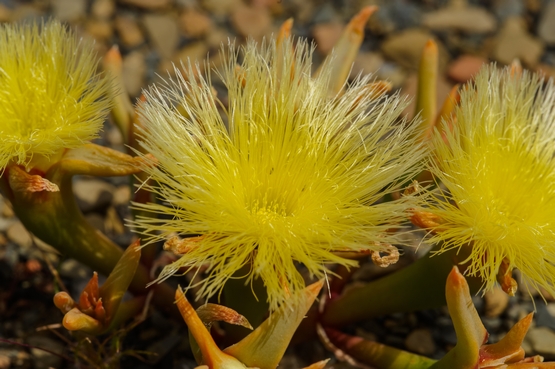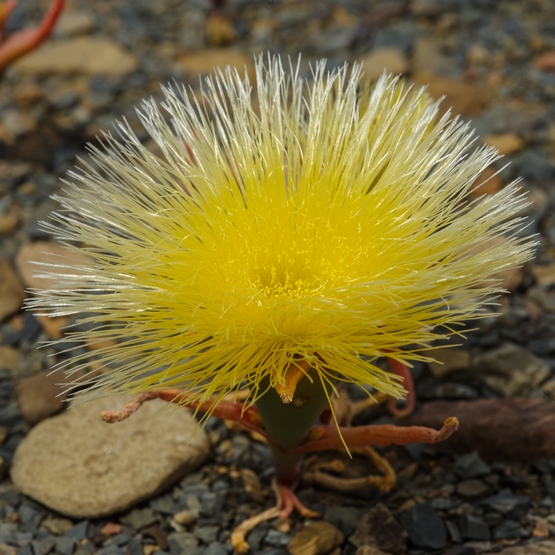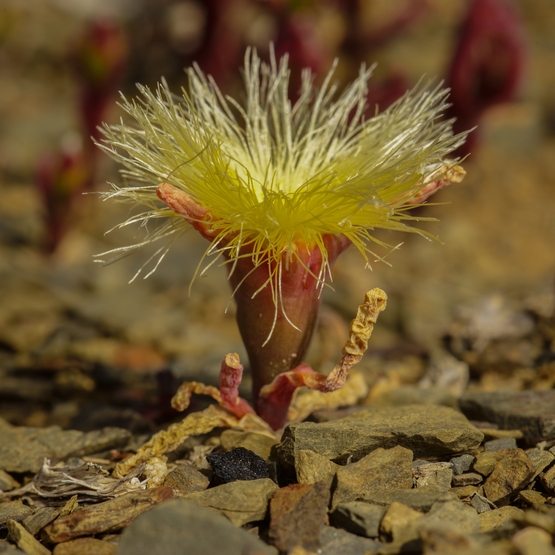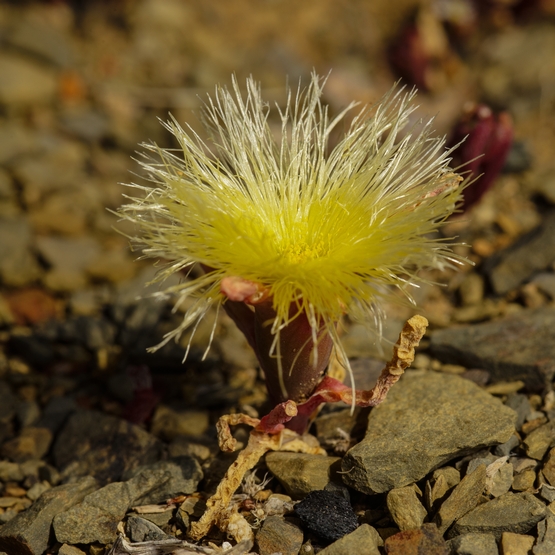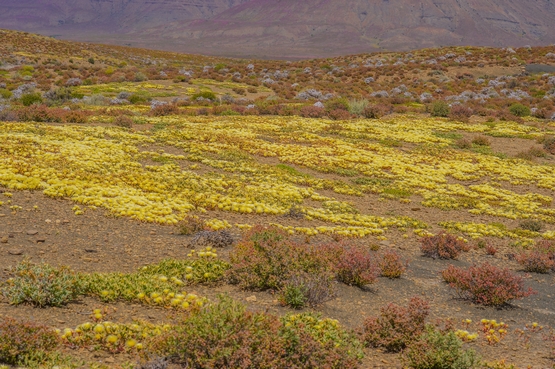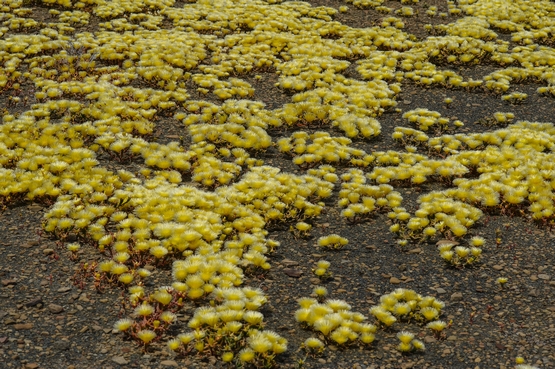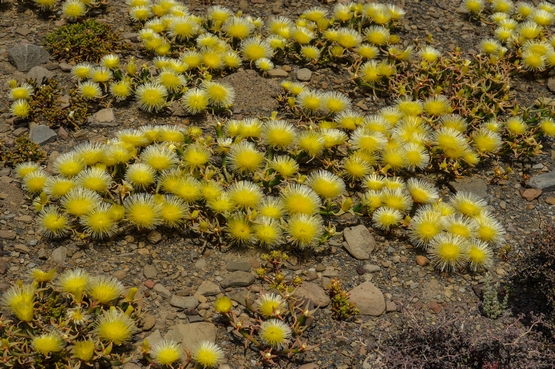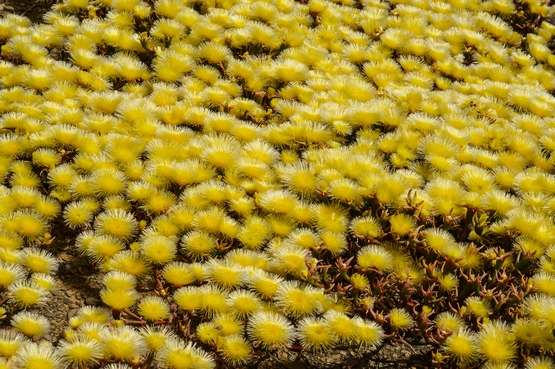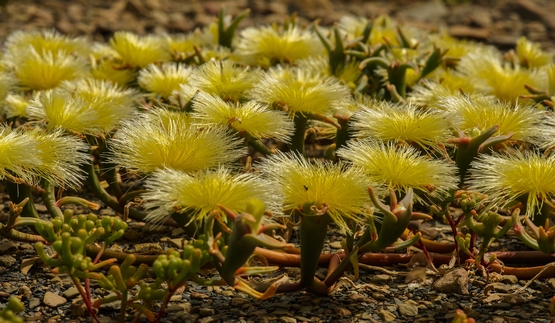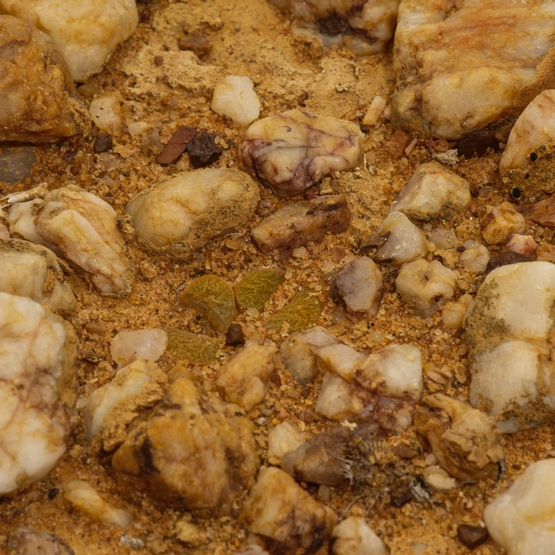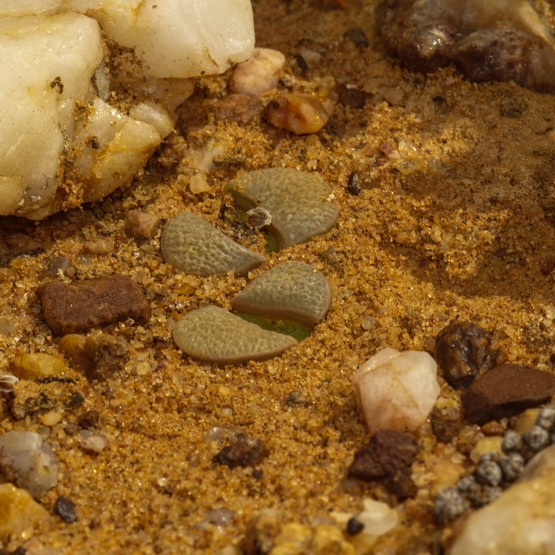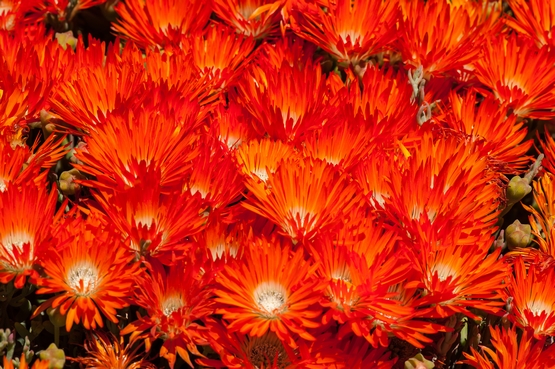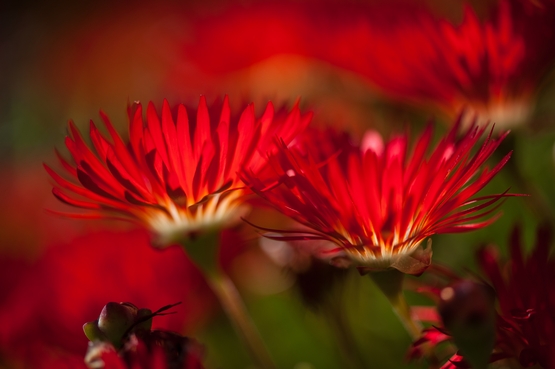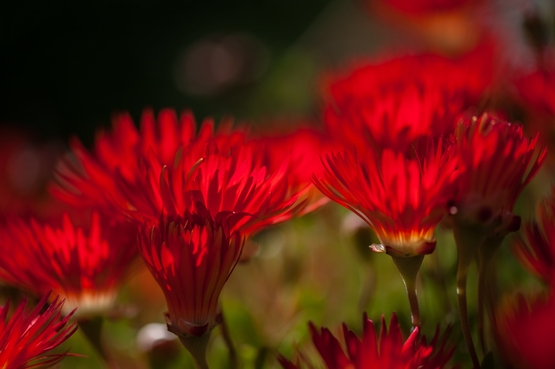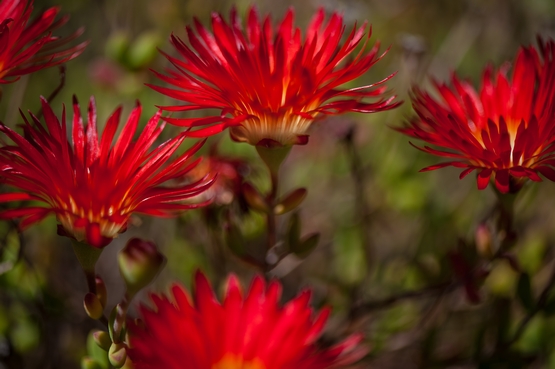Plants belonging to this species are found from Luederitz in Namibia to Alexander Bay in South Africa.
The first 3 pictures were made at Beauvallon 6 Sept. 2010; the fourth one 2 days later at Kortdoringberg.
Tag: Mesembs
Ihlenfeldtia vanzylii
Glottiphyllum fergusoniae (2)
I lied to you yesterday. Not on purpose, but as a result of sloppiness. Sorry, sorry.
I told you I had never before seen Glottiphyllum fergusoniae in the wild, but in the meantime I found out that this is not true. When I published my post yesterday, I did not think too much of it. Actually I had been working on another subject, but that took much more time then I had envisaged, so I decided to follow the easy route and just publish a few recent pictures with little commentary.
Much to my surprise a lot of people apparently liked the post, which in turn prompted me to have another look at the pictures. Then it dawned upon me that I had seen similar plants in late June this year. Because I still lived in Calitzdorp at the time, I came from the east, which fact supposedly prevented me from making the mental connection. Looking at the map it became clear that the two localities involved are only about 40 kms apart. I had ID’ed the June plants as G. surrectum, but in hindsight I did not pay proper attention to the fact that the leaves in that species are distichous (in two opposite rows) rather than decussate (in crossed pairs).
The following pictures show you plants from the eastern locality.
Glottiphyllum fergusoniae (1)
For the first time ever, I came across this species in the wild last week. It was growing along the road leading to the back entrance of the Anysberg Nature Reserve, northeast of Montagu.
The species is only recorded from the Montagu and Swellendam districts, where it grows in crevices in shale and sandstone. It differs from all other Glottiphyllums because of the pointed, upright leaves.
Dinteranthus puberulus
Mesembryanthemum eurystigmatum (2)
When you look carefully at the following three pictures, you will see that the plant here is reduced to just a flower. As long as this is able to close the circle from seed to seed all is fine. These are annual plants, remember.
The last two pictures are basically the same. The first of the two shows a bit of the background as well, whereas in the last one the camera was tilted a bit downwards, so that attention is focused completely on the flower. I cannot really say one picture is better than the other; it depends on what story you want it to tell.
Mesembryanthemum eurystigmatum (Eurystigma clavatum) 1
Lithops divergens v. divergens
Drosanthemum speciosum in a different guise
In my first post on this species, I referred to the fact that the flowers not only came in red, but also in orange. As I had never seen these in the wild, I could not show you a picture. In my former garden I even had a plant with yellow flowers, but as it originated from a nursery I could not be sure it was not a cultivar. So it would not be fair to show you a picture pretending it was of a wild plant.
I also mentioned that the plants are often seen along roads, but again I had no picture to substantiate this.
As it happens, I was on an outing yesterday that took me to the Ouberg pass, northeast of Montagu. Lots of flowering D. speciosum there, but non of them in red or scarlet as usual.

apart from a few almost pure yellow ones.
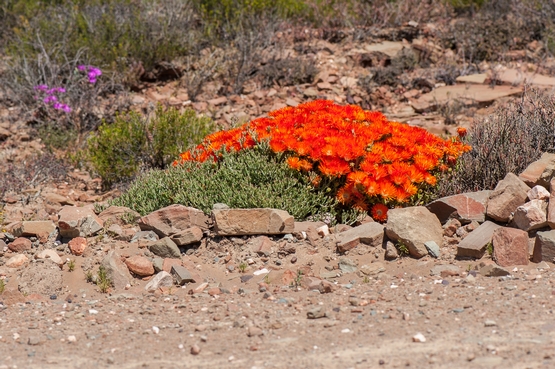
As a bonus, there was also a specimen growing almost in the road.
After three consecutive posts on one species, I will not mention it for a while now. Promise.
Drosanthemum speciosum, seen with different eyes
Yesterday I showed you some documentary type of pictures.
Confronted with all these beautiful flowers, it was clearly a waste of opportunities to not have another and different look at them. Although we talk about looking at things with different eyes, in reality we should call it looking with a different (part of the) brain.
In a case like this I usually have to take a deliberate decision to let the right hemisphere of my brain take over.
Once you are in that mode, it is sometimes difficult to stop; it is almost like being in a feeding frenzy. Anyway, I came home with a lot of pictures , many of which were very similar. This to me is one of the beauties of digital photography: the fact that there is no need to restrict yourself to taking a few pictures. Mind you, I’m not endorsing an attitude of just mindlessly taking lots of snapshots hoping that some of them will turn out right. (Recently I saw that nicely described as “point and pray”). But I do think that often it is good to “go with the flow”.
Below you will find a couple of pictures that for one reason or other seem worth showing to you.
The first three pictures give a general idea of the abundance of colour in these flowers.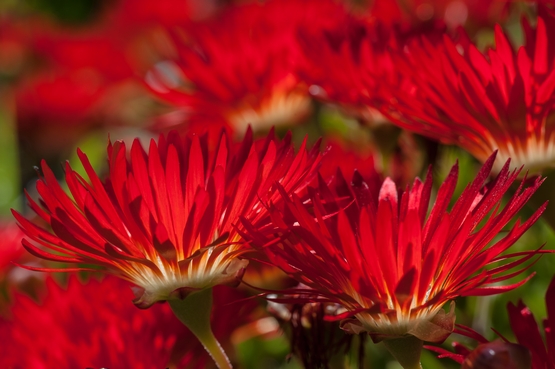
The second pair shows a more deliberate approach. It’s a case of ” can you spot the difference(s)? “.
I found the old fruit in the first picture a bit disturbing, so I removed it before taking the second one. On reflection, I think that the fruit adds interest to an otherwise somewhat empty space in the picture. The fact that it also gives some extra information seems to me less important in this kind of picture.
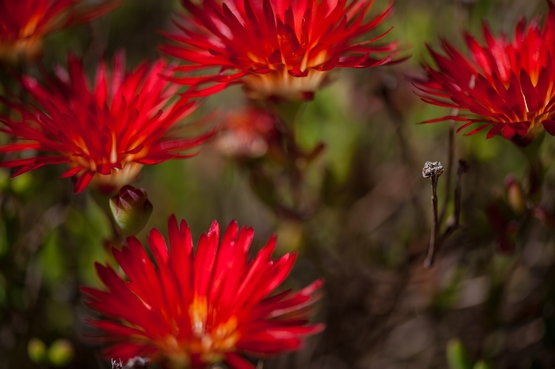
The next photo was slightly cropped in post production, resulting in a very balanced image. For some of us probably even a bit too balanced and formal.
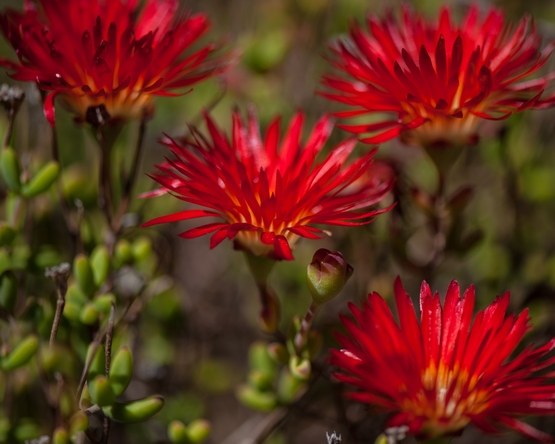
We end with a picture that I like because of the cheeky way a few of the petals refuse to follow the general pattern.
